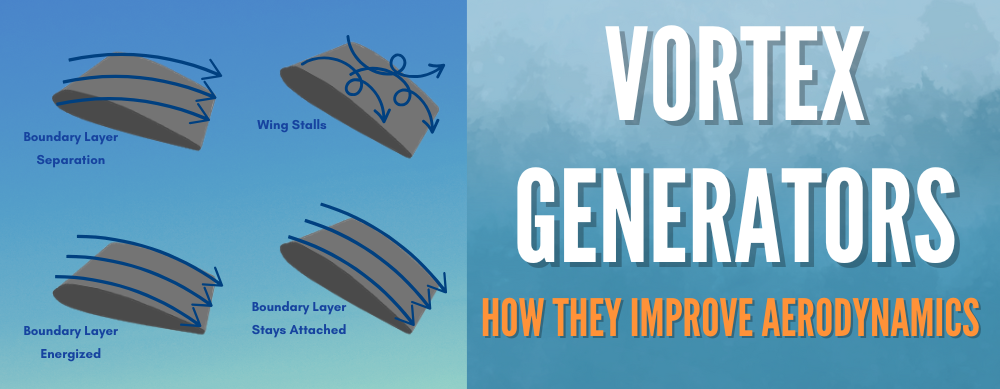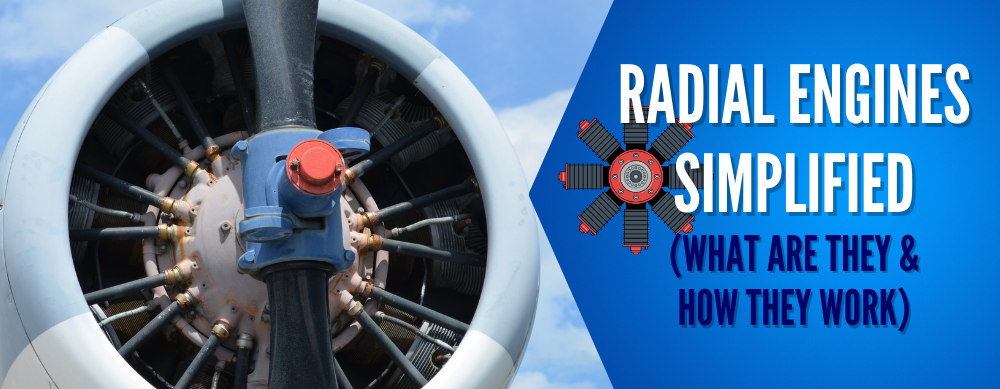Si examinas las alas de casi cualquier avión, lo primero que notarás será la forma aerodinámica que ayuda a todos los aviones a tener sustentación. Pero algo que quizás no notes tan fácilmente es una característica de diseño llamada "desgaste".
El objetivo del lavado es ayudar a que el avión sea más estable durante una pérdida de sustentación. Pero, ¿cómo se ve y cómo funciona exactamente?
¡Responderemos todas esas preguntas y más en este artículo!
RESUMEN
-
El lavado es una característica sutil del diseño del ala para lograr estabilidad en vuelo y recuperación de pérdida.
-
El lavado observa que la raíz del ala se atasca antes que las puntas.
-
Este diseño es común en la aviación general, planeadores y aviones comerciales.
-
El lavado ayuda a los pilotos a apreciar cómo están diseñados los aviones.

¿Qué es el lavado de alas?
Un lavado es una característica de diseño deliberada donde la punta del ala tiene un ángulo de incidencia menor que la raíz del ala.
Para explicarlo mejor, significa que cuando un avión se aproxima a una pérdida, la raíz se detiene primero, mientras que las puntas continúan generando sustentación. Esto ayuda a crear un mejor control y estabilidad para el avión.
Puedes intentar detectar la "desgaste" en un ala examinando las alas desde la parte delantera del avión y observando la torsión que se forma desde la raíz hasta la punta. La raíz tendrá un ángulo de incidencia mayor que la punta del ala.
Cómo afecta el deslave de las alas a la distribución de la sustentación
-
La diferencia en el ángulo de incidencia a lo largo de la envergadura provoca un patrón de pérdida progresiva.
-
El lavado garantiza que las puntas de las alas permanezcan en el aire mientras la raíz se detiene. Los pilotos terminan conservando el control del alabeo a través de los alerones.
-
Los lavados ayudan a crear un comportamiento de pérdida controlado que reduce el riesgo de giros involuntarios y puede ayudar con la recuperación de la pérdida.

El propósito del lavado en el diseño de aeronaves
Las alas de los aviones están diseñadas con un deslave para solucionar los problemas de pérdida de sustentación. Al examinar el borde de ataque del ala, notará la raíz, que es el punto donde el ala se une al cuerpo del avión.
El giro en la punta del ala hace que la raíz, que tiene un ángulo de ataque más alto, alcance su ángulo de ataque crítico antes que la punta, lo que provoca una pérdida primero en la raíz.
Esto evita que todo el ala se detenga y a menudo se denomina "deslave estructural", en lugar de "deslave aerodinámico".
Deslave estructural vs. aerodinámico
Como se mencionó al final de la sección anterior, hay dos tipos de derrumbes: un derrumbamiento estructural y un derrumbamiento aerodinámico.
Pero, ¿cuál es la diferencia entre ambos? Vamos a analizarla.
Deslave estructural
-
Se logra un lavado estructural al torcer físicamente el ala para que la punta tenga un ángulo de incidencia menor que la raíz.
-
Este tipo de erosión es más común en aeronaves de ala fija como el Cessna 172, que tiene alrededor de 3° de erosión.
Lavado aerodinámico
-
Se logra mediante el uso de diferentes formas de perfil aerodinámico, generadores de vórtices, bandas de pérdida o puños de ala.
-
Verás esto en aviones como el Cirrus SR-22. Utiliza secciones de alas con puños para ayudar a mantener el control en ángulos de ataque altos.

¿Cómo funciona el lavado?
Cuando un avión aumenta su ángulo de ataque, la raíz alcanza primero el ángulo crítico de pérdida debido a su mayor incidencia. Esto permite que las puntas sigan generando sustentación, lo que evita desviaciones repentinas que podrían provocar una barrena.
Escenarios de deslave en establos
-
Vuelo recto y nivelado → Tanto la raíz como la punta generan sustentación normalmente.
-
Aproximación al estancamiento → La raíz experimenta la separación primero, mientras que la punta aún proporciona sustentación.
-
Estanqueidad total → La raíz está completamente estancada, pero las puntas mantienen el flujo de aire para la recuperación.

Deslave y diferentes tipos de aeronaves
Aeronaves de aviación general
-
La mayoría de las aeronaves pequeñas, como el Cessna 172, utilizan el efecto de lavado para ayudar a proporcionar estabilidad en pérdida.
-
Previene momentos de balanceo bruscos durante una pérdida.
Planeadores y Alas delta
-
El lavado reduce el guiñada adversa y mejora la estabilidad en vuelo lento.
-
Se utiliza para minimizar la resistencia y optimizar el rendimiento del planeo.
Aeronaves militares y de alto rendimiento
-
Algunos aviones de combate utilizan el efecto de lavado inverso (wash-in) para mejorar la maniobrabilidad a alta velocidad.
-
El deslave es menos común en los aviones acrobáticos porque requieren características de vuelo simétricas.

Qué buscar:
¿Quieres saber cómo detectar la erosión? Aquí te explicamos cómo:
-
En los aviones, el borde de salida cerca de la punta del ala suele estar ligeramente inclinado hacia abajo en comparación con la raíz. Esto se debe a que el ángulo de incidencia desde la raíz hasta la punta disminuye.
-
Se puede ver en la alineación de los alerones y los flaps que están hechos de una manera en la que la línea de cuerda de la punta del ala está en un ángulo más bajo en relación con la raíz.
-
Si el ala del avión tiene winglets, estos se ubicarán en la punta del ala y están orientados para reducir la resistencia. A menudo se combinan con un efecto de derribo para ayudar al avión a mantener su efectividad de control en condiciones de pérdida.

Lavado vs. Giro del ala: ¿cuál es la diferencia?
Hay una diferencia entre tener un giro en un ala o específicamente un lavado.
Diferencias clave
|
Característica |
Fracaso |
Giro del ala |
|---|---|---|
|
Definición |
Disminución del ángulo de incidencia desde la raíz hasta la punta |
Una torsión general a lo largo de la envergadura del ala. |
|
Objetivo |
Ayuda a mejorar las pérdidas y características de las alas, la estabilidad y el control. |
Puede ser por integridad estructural o eficiencia aerodinámica. |
|
Ejemplo |
Cessna 172 (3° de deslave) |
Algunos aviones de combate con lavado intencional para su maniobrabilidad |

Preguntas frecuentes
-
¿Cuál es la razón principal para utilizar lavado en las alas?
El lavado asegura que la raíz del ala se detenga antes que la punta. Su objetivo es mantener el control y evitar tendencias peligrosas a volcar.
-
¿Todos los aviones tienen lavado?
La mayoría de las aeronaves diseñadas para la estabilidad y la seguridad presentan cierto grado de deslave, pero los aviones acrobáticos y de combate pueden tener poco o nada.
-
¿Se puede ajustar el lavado después de la construcción de la aeronave?
Sí, se pueden realizar cambios menores de erosión mediante el uso de aparejos de alerones, tiras de pérdida o modificaciones del borde de ataque.
-
¿Cuánta erosión es típica en aeronaves pequeñas?
Los aviones ligeros como el Cessna 172 suelen tener alrededor de 3° de desviación, mientras que otros diseños pueden variar según sus necesidades aerodinámicas.
Llevar
Ahora ya sabes que un derrumbe es una característica de diseño sorprendente que ayuda a mejorar la estabilidad de una aeronave, el comportamiento en pérdida y le da al piloto más control.
Solo recuerda que la raíz del ala entra en pérdida antes que las puntas, el deslave mantiene la efectividad de los alerones, evita que se deslicen repentinamente y reduce el riesgo de que se produzcan barrenas. Es un trabalenguas, pero es importante recordarlo.
Es bastante común en la aviación general, en los aviones comerciales y también en los planeadores. Es posible que algunos aviones acrobáticos y de alto rendimiento no utilicen el efecto de derribo, pero eso se debe a que necesitan maniobrabilidad.
No dudes en aprender más sobre ingeniería y aerodinámica. El vuelo y su funcionamiento es una actividad asombrosa y uno de los mayores logros de la humanidad.
¿Interesado en la aerodinámica?
¡Nuestras guías están diseñadas para ayudar!
-
¿Cómo vuelan los helicópteros? (Explicación de la aerodinámica)
-
Pérdida de sustentación del estabilizador: la aerodinámica y cómo recuperarse
-
Comba del perfil aerodinámico: su efecto sobre la aerodinámica Cómo genera sustentación
-
Cómo funcionan los winglets y los vórtices de las puntas de las alas
¿Le resultó útil este artículo?
¿Crees que nos hemos olvidado de alguna pregunta importante de la entrevista? ¡Cuéntanoslo en los comentarios a continuación!







